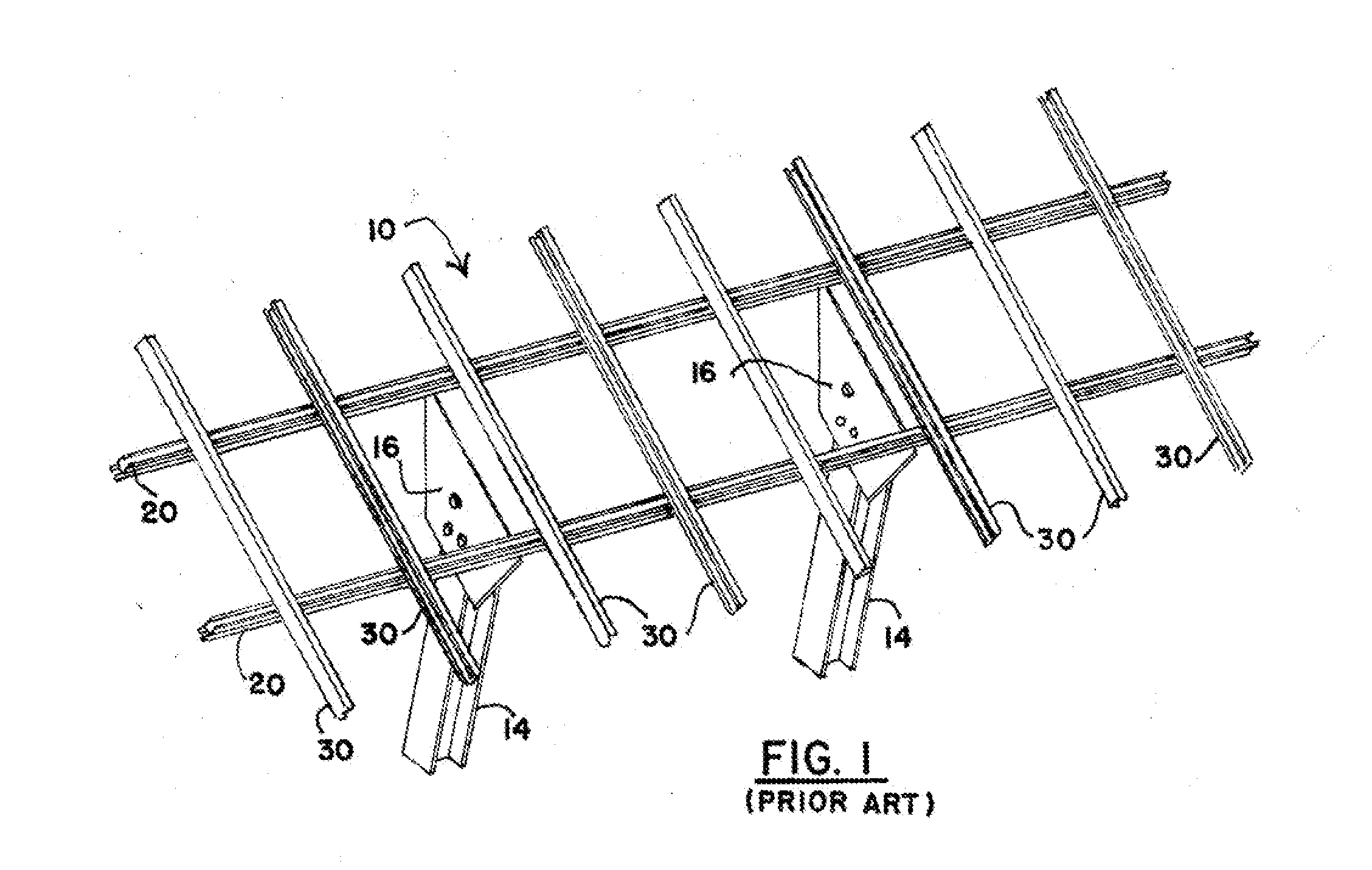Typically, these support systems are costly, heavy, structurally inferior, mechanically complicated and the installation is labor-intensive.
Once the support structure is in place, mounting the solar panels on the support structure can be very difficult.
It is further complicated by the tendency of some large solar panels to sag and flex, thereby rendering the panel mounting unstable.
Panel repair and adjustment thereby become more difficult.
This installation process, especially if involving multiple clips 45, is often costly, inaccurate, dangerous and time-consuming.
However, even with a reliable, easily-deployed support array, there are still difficulties in the installation of the panels themselves, especially solar panel arrays.
In particular, existing support systems require meticulous on-site
assembly of multiple parts, performed by expensive, dedicated field labor.
Assembly is often performed in unfavorable working conditions, i.e. in harsh weather or in difficult
terrain, without the benefits of
quality control safeguards and precision tooling.
This can jeopardize the supported solar panels.
Another problem is the spacing of the photovoltaic (solar) panels 12.
It is also challenging to precisely space the panels on-site using existing support structures and panel clips 45, without advanced (and expensive) technical assistance.
Unfortunately, the operation of drilling the holes on-site requires skilled workers, and even with skilled installation, misalignment of the support structure and / or the solar panels supported by the structure may still occur (i.e. improperly spaced or slightly skewed from parallel).
If this process is executed on-site, accurate placement of the solar panels becomes extremely difficult.
This is an awkward arrangement, even in the hands of expert installers.
Despite the effectiveness of this particular arrangement, there are still difficulties to be addressed, as elaborated on below.
Misalignment difficulties are exacerbated by the flexing of the panels 12 and sagging permitted by the natural flexibility of the panels.
Improper installation, which occurs frequently in conventional systems, can lead to
dislocation of the panels due to sagging or atmospheric conditions.
The use of a wide variety of different mounting positions and panel array arrangements also worsens the stability problems caused by panel sagging or deflection.
Further, certain mounting positions will make the panels 12 more vulnerable to atmospheric disruptions, such as those created by wind and
precipitation.
All of these variables also complicate electrical connections to the panels.
However, there are drawbacks in this approach.
In particular, there are only a limited number of points at which panel clips can be connected.
The problems caused by misalignment due to sagging are further exacerbated in some environments by the accumulation of ice on the panels.
Icing can also be a problem, particularly when water works its way into crevasses found throughout the overall panel array 10, and then freezes and expands.
Still further,
icing can become particularly problematic with respect to panel clips 45 extending beyond the panels 12 or the support rails 30.
This in turn necessitates adjustments in the panel holding structures, which are often not successful since they are conventionally limited to two edges of the panel.
At present, none of the conventional panel support systems offer the capabilities of eliminating the problems mentioned above.
 Login to View More
Login to View More  Login to View More
Login to View More 


